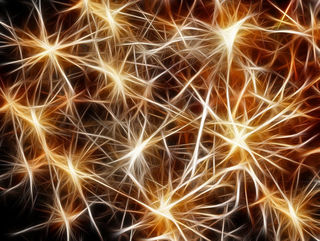Artificial Intelligence
AI Surpasses Neuroscientists in Spotting Neurons
Duke University’s AI deep learning tracks neurons faster and better than humans.
Posted April 23, 2019

Ever wonder how neuroscientists are able to monitor and study what happens inside a living brain in action? One of the challenges in neuroscience is observing the activity of neurons intact in brain tissue that is taking place in a living organism—in vivo.
One approach, two-photon calcium imaging, is a method developed circa 1990. In mammalian neurons, calcium is an intracellular messenger. This imaging approach involves the loading of calcium ions (Ca2+) indicator dyes in the desired brain region for neuronal monitoring and a two-photon laser scanning microscope for visualization. Two-photon calcium imaging not only enables the monitoring of multiple neurons at both the cellular and subcellular resolution, but also the monitoring of intact neuronal circuits in real-time, and in vivo.
But having the recorded images of neural activity solves only part of the equation. Neuroscientists now have the challenge of making sense of the recordings by identifying the firings of the individual neurons that they are studying. The most accurate and conventional approach, called segmentation, is a completely manual process—a human researcher visually observes the recordings and tags each firing of only the small number of neurons out of thousands that they are studying.
Earlier this month, neuroscientists in Duke University’s Department of Biomedical Engineering announced a new open source deep learning algorithm that segments neurons from brain image recordings faster and as accurately as neuroscientists, and published their research in Proceedings of the National Academy of Sciences.
The researchers used a three-dimensional convolutional neural network to analyze two-photon calcium imaging recordings to identify and segment active neurons. The scientists wrote, “our method outperforms state-of-the-art techniques and is on a par with manual segmentation.”
“This improved performance in active neuron detection should provide more information about the neural network and behavioral states, and open the door for accelerated progress in neuroscience experiments,” said Somayyeh Soltanian-Zadeh, a Ph.D. student in Duke BME and first author on the paper.
According to a Duke University report, the machine learning algorithm automates segmentation, enabling 30-minute recording to be processed in twenty to thirty minutes, which is significantly faster than the existing manual process that may take researchers an estimated four to 24 hours of work for the same amount of imaging footage.
Soltanian-Zadeh describes the deep learning algorithm as “accurate as (if not better than) human experts in segmenting active and overlapping neurons from two-photon microscopy recordings.”
The researchers describe their machine learning program as a “computationally fast method” and “an invaluable tool for a large spectrum of real-time optogenetic experiments.” The open-source software and annotated dataset have been made available online to help accelerate future discoveries in neuroscience.
Copyright © 2019 Cami Rosso All rights reserved.
References
Soltanian-Zadeh, Somayyeh, Sahingur, Kaan, Blau, Sarah, Gong, Yiyang, Farsiu, Sina. “Fast and Robust Active Neuron Segmentation in Two-Photon Calcium Imaging Using Spatio-Temporal Deep-Learning.” Proceedings of the National Academy of Sciences. April 12, 2019.
Duke University (2019, April 12). Artificial Intelligence Singles Out Neurons Faster Than a Human Can [Press release]. Retrieved from https://pratt.duke.edu/about/news/artificial-intelligence-singles-out-n…
Grienberger, Christine, Konnerth, Arthur. “Imaging Calcium in Neurons.” Neuron. March 8, 2012.
Kondo, Masashi, Kobayashi, Kenta, Ohkura, Masamichi, Nakai, Junichi, Matsuzaki, Masanori. “Two-photon calcium imaging of medial prefrontal cortex and hippocampus without cortical invasion.” bioRxiv. March 23, 2017.
Russell, James T. “Imaging calcium signals in vivo: a powerful tool in physiology and pharmacology.” British Journal of Pharmacology. 2011 Aug.
Stosiek, Christoph, Garaschuk, Olga, Holthoff, Knut, Konnerth, Arthur. “In vivo two-photon calcium imaging of neuronal networks.” Proceedings of the National Academy of Sciences. June 10, 2003.


